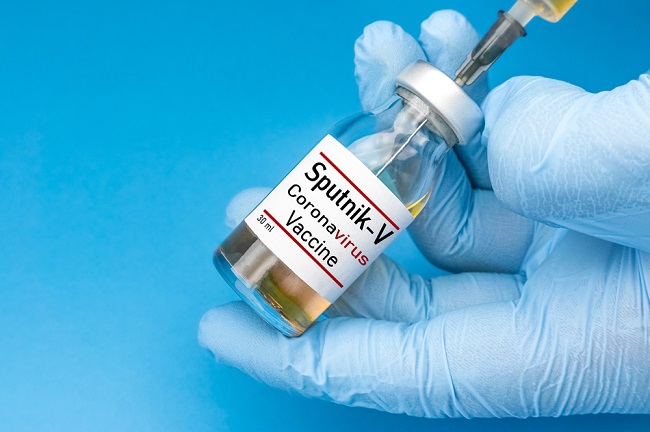Paclitaxel is a cure for treat certain types of cancer, such as breast cancer, pancreatic cancer, or lung cancer. In addition, this drug is also used to treat Kaposi's sarcoma in people with HIV.
Paclitaxel works by inhibiting the formation cycle microtubule cell. This way of working will prevent or inhibit cancer cell division. This drug is available in the form of an injection that can only be given by a doctor or medical officer under the supervision of a doctor.

Trademark paclitaxel: Cytax, Paclihope, Paxomed
What's that Paclitaxel
| group | Prescription drugs |
| Category | Anti cancer |
| Benefit | Treat breast cancer, lung cancer, pancreatic cancer, or Kaposi's sarcoma in people with HIV |
| Used by | Mature |
| Paclitaxel for pregnant and lactating women | Category D: There is positive evidence of risks to the human fetus, but the benefits may outweigh the risks, for example in dealing with life-threatening situations. It is not known whether Paclitaxel is absorbed into breast milk or not. If you are breastfeeding, do not use this medicine without consulting your doctor first. |
| Drug form | Inject |
Warning Before Using Paclitaxel
Paclitaxel injection should only be given by a doctor or medical officer under the supervision of a doctor. Here are the things you should pay attention to before using paclitaxel:
- Tell your doctor about any allergies you have. Paclitaxel should not be given to patients who are allergic to this drug or castor oil (castor oil).
- Tell your doctor if you have liver disease, infection, heart rhythm disorder, bone marrow disease, neuropathy, or any blood disorder, including leukopenia.
- Tell your doctor if you are taking certain medications, supplements, or herbal products.
- Tell your doctor if you are pregnant, breastfeeding, or planning a pregnancy. Use effective contraception while on treatment with paclitaxel to prevent pregnancy.
- Tell your doctor if you plan to get vaccinated while you are taking paclitaxel.
- Do not drive a vehicle or do activities that require alertness, after using paclitaxel, as this medicine may cause dizziness and drowsiness.
- Avoid close contact with people with infectious diseases that are easily transmitted, such as chickenpox or the flu, because these drugs can make it easier for you to catch an infection.
- Report to your doctor if you have an allergic drug reaction, serious side effects, or overdose after using paclitaxel.
Dosage and Instructions for Use Paclitaxel
The dose of paclitaxel given by the doctor depends on the patient's health condition and body surface area (LPT). In general, the dose of paclitaxel for adults based on the condition to be treated is as follows:
- Condition: Breast cancer
The dose is 175 mg/m2, for 3 hours, every 3 weeks per cycle. Treatment will be carried out for 4 cycles.
- Condition: Breast cancer that has spread (metastasized)
The dose is 260 mg/m2, for 30 minutes, every 3 weeks.
- Condition: Lung cancer
The dose is 100 mg/m2, over 30 minutes, on days 1, 8, and 15 of a 21-day cycle. Treatment will be combined with carboplatin.
For very severe lung cancer, the dose is 175 mg/m2, for 3 hours, or 135 mg/m2, for 24 hours. The dose will be repeated every 3 weeks. Treatment will be combined with cisplatin.
- Condition: Pancreatic cancer that has spread (metastasized)
The dose is 125 mg/m2, over 30 minutes, on days 1, 8, and 15 of a 28-day cycle. Treatment will be combined with gemcitabine.
- Condition: Kaposi's sarcoma in HIV patients
The dose is 100 mg/m2, for 3 hours, every 2 weeks. For the treatment of Kaposi's sarcoma, the patient needs to undergo blood tests first, to ensure the neutrophil count is >1,500 cells/mm3, if it is less than this number, paclitaxel should not be used.
How to use Paclitaxel correctly
Paclitaxel injection will be given in the hospital. The injection will be directly carried out by a doctor or medical officer under the supervision of a doctor.
The doctor will also monitor breathing, blood pressure, and kidney function during the injection and while the patient is on therapy with paclitaxel.
Follow your doctor's advice and recommendations while you are taking paclitaxel. Do not stop taking medication without consulting your doctor first.
During treatment, you will undergo regular complete blood counts to monitor your condition, response to therapy, and possible side effects.
Interaction Paclitaxel with other drugs
The following are some of the effects of interactions that may occur if paclitaxel is used with certain drugs:
- Decreased effectiveness of live vaccines, such as BCG vaccine or measles vaccine
- Increased risk of developing dangerous infections when used with etanercept or fingolimod
- Increased risk of bone marrow disorders when used with deferiprone
- Increased blood levels of paclitaxel when used with ketoconazole or fluoxetine
- Decreased effectiveness of paclitaxel when used with rifampicin or efavirenz
Side Effects and Dangers Paclitaxel
Tell your doctor if the following side effects do not subside or get worse:
- Nausea and vomiting
- Diarrhea
- Hair loss
- The injection site looks red, itchy, or swollen
- Numbness or tingling in the hands or feet
- Severe dizziness or drowsiness
In addition, report to your doctor immediately if you experience an allergic reaction to the drug or experience more serious side effects, such as:
- Symptoms of anemia, which can be characterized by pale skin, tiredness, tiredness, or lethargy
- Easy bruising, paleness, or coughing up blood
- Fainting, confusion, or seizures
- Irregular or slow heartbeat
- Heart beat
- Jaundice









